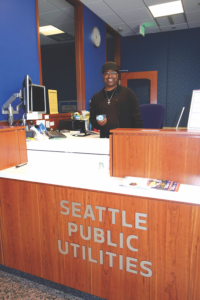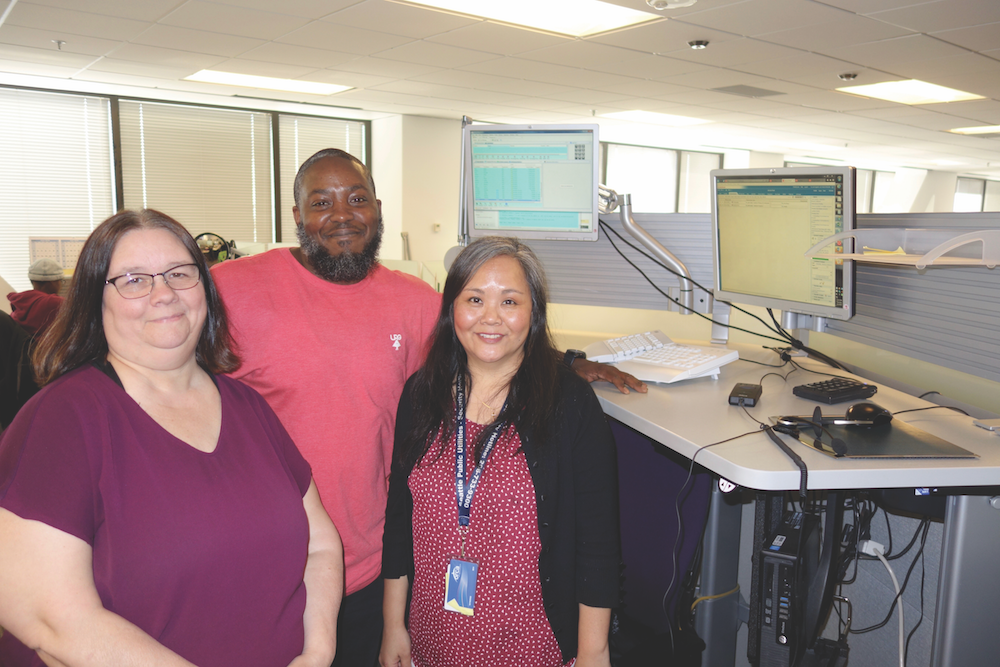 More than 2,000 calls come in to the City of Seattle everyday with questions about utilities and city services, and the 84 PROTEC17 members that staff the contact center are the friendly voices on the other end of the line.
More than 2,000 calls come in to the City of Seattle everyday with questions about utilities and city services, and the 84 PROTEC17 members that staff the contact center are the friendly voices on the other end of the line.
The Utility Account Representatives (UARs) are the front line to answer Seattle residents’ questions and to resolve issues with electricity, water, sewer, garbage, and more. As customer service experts, they are adept at diffusing difficult situations and directing people to the resources they need.
“Sometimes customers will call in and initially they’re really upset,” said PROTEC17 member Gina Kim, who has been a UAR 2 for five years.
“Our job is to maintain a level of professionalism, act with empathy and educate our customers. The call often ends with the customer appreciative of the service they received.”
The UARs have up to eight calls an hour, depending upon how complicated the question or issue, and average about 37 calls per day – but can have up to 50.
PROTEC17 member and UAR 1 Wayne Brandon likes to think of each call as a ‘complicated puzzle’ – whether that be helping a customer figure out which size compost bin they need, tracking power outages, or connecting low-income residents with utility assistance programs.
“The best part of my job is finding resolution for my customers,” said Brandon, who has been with the City for seven years.
One of the things that PROTEC17 member and UAR 1 Carol Wellman likes best about her job is being able to “make someone’s day.” Wellman is one of the UARs who answers written communications, including emails and letters.
While they are housed under Seattle Public Utilities, a large percentage of the contract center is funded by Seattle City Light. After City Light switched to automated meter-reading a couple of years ago, there were many more calls and questions about electric bills. Now that the new system is in full swing, the number of contacts has leveled out a bit, and the usage data that is collected is more robust, making it easier to answer people’s questions.
After each call, customers are asked to take a survey about the service they received. Most often, the feedback is very positive.
“One time, a customer even tweeted about the great customer service I provided,” said Brandon. “That was pretty cool.”
Kim summed up the sentiment of our hard-working members in the contact center: “At the end of the day, we’re here for our customers – no matter what.”


